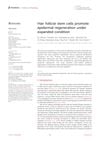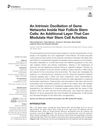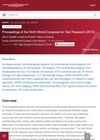Hair Regeneration: Mechano-Activation and Related Therapeutic Approaches
September 2025
in “
PubMed
”
mechanical stimulation hair follicle stem cells WNT pathway BMP pathway macrophage recruitment growth factor release HGF IGF-1 MSC transplantation MSC secretome therapy platelet-rich plasma chimeric follicle development dermal papilla mesenchymal cell interactions PRP mesenchymal stem cell hepatocyte growth factor insulin-like growth factor 1

TLDR Mechanical stimulation and new therapies show promise for hair regrowth.
The document reviews recent advances in hair regeneration, emphasizing mechanical stimulation and complementary therapies. Mechanical forces, such as skin stretching, activate hair follicle stem cells (HFSCs) and promote hair growth by engaging signaling pathways like WNT and BMP, involving macrophage recruitment and growth factor release. Beyond mechanical activation, therapies like MSC transplantation, MSC secretome therapy, and platelet-rich plasma treatments show promise. The review discusses molecular mechanisms, the role of dermal papilla cells, and the hair follicle microenvironment. Mechanobiology-based therapies aim to enhance hair regrowth, offering potential solutions for alopecia by addressing immune and mechanical factors. The document highlights the importance of understanding HFSCs, their microenvironment, and key signaling pathways, such as Wnt/β-catenin, TGF-β/BMP, Notch, and PI3K/AKT, in developing effective hair regeneration strategies. Hormones, stress, inflammation, and ECM properties also play significant roles, suggesting therapeutic strategies by modulating these factors. Non-invasive devices and biomaterials are explored, with challenges in clinical translation noted. Overall, the integration of biomaterials, devices, and cell-based approaches in mechanobiology holds promise for innovative hair regeneration therapies.



